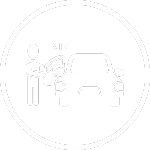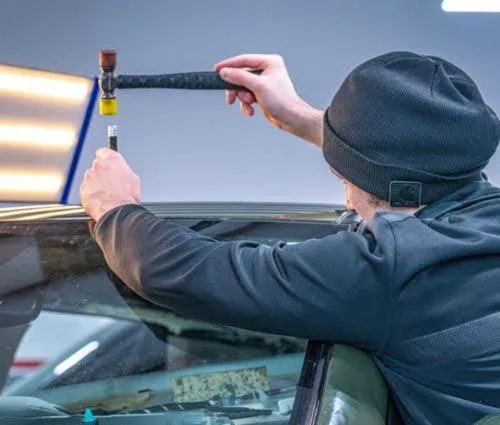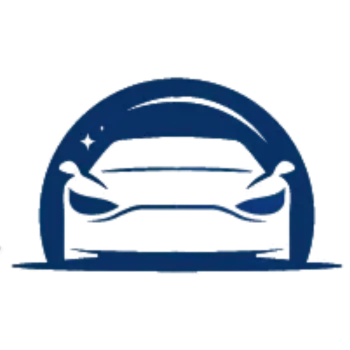Auto Hail Repair
What Goes Into a Hail Damage Estimate?

FSDAVCFEBFEVSDDVFSD

FSDAVCFEBFEVSDDVFSD

FSDAVCFEBFEVSDDVFSD
What Is a Hail Estimate?

A hail damage estimate breaks down the cost to repair dents from a recent storm. The estimate includes dent size, location, and how many dents there are. At shops like Dentex Midwest, most repairs use Paintless Dent Repair (PDR), which avoids painting or part replacement.
That’s key to saving time and preserving your factory finish. PDR is highly accurate, and it keeps costs lower. When you receive your estimate, you’ll see how each factor contributes to the total giving you clear, upfront pricing before the repair starts.

Key Factors That Impact CosT
The number of dents and their size are major factors in any hail repair estimate. A hood with dozens of quarter-sized dents takes more time to repair than a panel with a few small ones. These details are usually mapped out using a PDR pricing matrix, which provides consistent pricing based on dent volume and size. Materials also play a role aluminum panels are more labor-intensive than steel, which can add cost.
Dent location is another key detail. Flat panels like the roof or hood are usually easier to work on than curved body lines or tight areas like door edges. If dents are in hard-to-reach spots, extra time is needed. Technicians may need to remove interior parts in a process called R&I (Remove & Install) which adds to labor costs. This is a common line item in a hail repair quote and should always be clearly labeled.
What makes PDR so efficient is the absence of paint or part replacement. It’s faster and maintains the original finish. Plus, fewer materials mean reduced labor hours and a more affordable vehicle hail repair cost. Reputable shops will walk you through this process, helping you understand where every dollar goes.

Breaking Down Labor Costs
The majority of your hail repair estimate is based on labor, specifically the time, tools, and expertise required to repair each dent. Paintless Dent Repair (PDR) is a hands-on process that relies on a skilled technician’s ability to reshape dented metal from behind the panel. Each dent must be carefully assessed for size, depth, and location.
Depending on complexity, some dents can be fixed in just a few minutes, while others, especially those near edges or body lines, can take significantly longer. Estimates typically show this breakdown by panel, helping you see where time is spent. The benefit of PDR is that it avoids the need for traditional body repair methods. There’s no sanding, body filler, or painting involved, which means you save on both materials and shop labor.

That also means your vehicle hail repair cost is typically lower and turnaround time is faster. PDR maintains your factory finish, so there’s no risk of mismatched paint or future peeling, two common problems with conventional repairs.
Shops that specialize in this method like our trusted PDR technicians use specialized rods and LED lighting to work each dent out with precision. The labor cost reflects their training, technique, and attention to detail. Because every vehicle is different, no two quotes are exactly the same. But a good estimate will always explain the labor charges by showing you how the technician will approach the repair, how many dents exist per panel, and how long each one might take. This transparency helps you trust the process and feel good about your final hail repair quote.
Get Clarity on Your Quote Details
When you receive a hail repair estimate, it should clearly outline the work needed for each panel of your vehicle. Most professional shops follow a PDR pricing matrix, which calculates costs based on the number and size of dents. Your estimate should include dent counts, dent sizes, and a line-by-line breakdown of labor required for each area. This helps warrant pricing is consistent and fair.
Your quote may include R&I charges short for Remove and Install. These apply when technicians need to remove interior panels, lights, or trim pieces to reach dents from behind. It’s a normal part of PDR and should be itemized clearly.
Materials should also be specified. Vehicles with aluminum panels often require more labor due to the metal’s rigidity, and this should be reflected in the quote. A reputable shop that focuses on auto hail repair will walk you through every detail, making sure you're comfortable with the process and know exactly what you're paying for.
Insurance Coverage and Deductible Basics Explained
If your vehicle has been damaged by hail and you carry comprehensive auto insurance, there’s a good chance your policy will cover the cost of repairs. However, most policies come with a hail repair cost deductible, which is the portion you’ll need to pay out of pocket.
This amount typically ranges from $250 to $1,000, depending on your plan and insurance provider. Before filing a claim, it's smart to get a professional estimate to compare the vehicle hail repair cost against your deductible.
If the cost of repairs is close to or below your deductible, it may be more economical to pay for the repairs yourself. On the other hand, if the damage is extensive, filing a claim is likely the better option.


Some repair shops, including Dentex Midwest, offer deductible assistance or flexible payment plans to help ease the financial burden. Be sure to ask about these programs when getting your quote. Many shops also coordinate directly with insurance companies, handling paperwork and photo documentation to speed up the process. That means less hassle for you and a faster path to getting your car back in like-new condition.
How to Accurately Read Your Estimates
Understanding your hail repair estimate is key to making a confident decision. Start by reviewing each panel listed in the quote, dent counts and sizes should be clearly labeled. Reputable shops use a standardized PDR pricing matrix, which helps confirm consistent, fair pricing based on industry standards. If that information isn’t included or feels vague, ask for a more detailed explanation.
Be on the lookout for R&I charges. These cover the labor needed to remove and reinstall parts like trim, lights, or headliners to access the back of the dented panel. While R&I is common in Paintless Dent Repair, excessive charges or unclear line items should raise a red flag. Ask the shop what’s being removed and why.
Some vehicles have panels made of aluminum or other specialty materials. These can be more time-consuming to repair, and your quote should reflect that with a clear breakdown. If any part of your quote includes conventional repairs such as painting or sanding ask why PDR wasn’t chosen. A shop that focuses on hail damage repair should be able to walk you through the reasoning.

Dentex Midwest
Professional Hail Repair & PDR
Stay Up-to-date With Our Content
Subscribe to learn more about our mission!
Stay Up-to-date With Our Content
Subscribe to learn more!
Contact Info
Service Hours
Social Media
Home
Services
Service Areas
Blog
About
Contact
Contact Info
Service Hours
Mon - Fri: 8:00 am – 6:00 pm
Saturday: by Appointment
Sunday: Closed
Social Media

Licensed, bonded, & insured